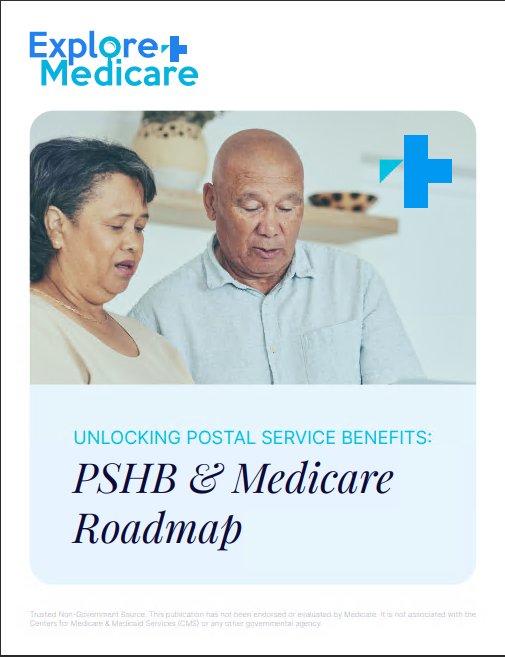Key Takeaways
-
Understanding Medicare basics empowers you to make informed decisions about your retirement healthcare needs.
-
Familiarity with timelines, coverage options, and potential costs ensures you can optimize your benefits and avoid unnecessary expenses.
Medicare: The Foundation of Your Retirement Healthcare
As you plan for retirement, healthcare becomes a crucial part of your financial and personal well-being. Medicare, the federal health insurance program for those aged 65 and older, as well as certain younger individuals with disabilities, serves as the cornerstone of retirement healthcare. By grasping the basics of Medicare, you can set the stage for smarter decisions about your health coverage and financial stability.
The Four Parts of Medicare
Medicare is divided into four distinct parts, each serving a specific purpose. Here’s a breakdown to help you navigate:
Medicare Part A: Hospital Insurance
-
Covers inpatient hospital stays, skilled nursing facility care, hospice, and some home healthcare services.
-
Most beneficiaries don’t pay a monthly premium if they’ve worked and paid Medicare taxes for at least 10 years (40 quarters).
-
Be aware of the annual deductible and coinsurance costs, which can add up during extended hospital stays.
Medicare Part B: Medical Insurance
-
Provides coverage for outpatient services, doctor visits, preventive care, and medical supplies.
-
Requires a monthly premium based on your income.
-
Features an annual deductible and typically covers 80% of approved medical services after the deductible is met, leaving you responsible for the remaining 20%.
Medicare Part C: Medicare Advantage
-
An alternative to Original Medicare (Parts A and B) offered through private insurers.
-
Often includes additional benefits like vision, dental, and hearing, but may limit your choice of providers to a network.
-
Costs and coverage vary widely, so compare plans carefully to determine if it suits your needs.
Medicare Part D: Prescription Drug Coverage
-
Helps cover the cost of prescription medications.
-
Offered by private insurers, plans come with their own premiums, deductibles, and formularies (list of covered drugs).
-
Starting in 2025, a new $2,000 cap on out-of-pocket prescription drug costs provides much-needed financial relief.
Enrollment Periods You Should Know
Timely enrollment in Medicare ensures you have coverage when you need it and helps you avoid late penalties. Here are the critical periods to keep in mind:
Initial Enrollment Period (IEP)
-
A seven-month window surrounding your 65th birthday (three months before, the month of, and three months after).
-
Enrolling during this time guarantees coverage starts promptly, avoiding any penalties or delays.
General Enrollment Period (GEP)
-
Runs from January 1 to March 31 each year.
-
Designed for those who missed their IEP, but coverage doesn’t begin until July 1.
-
Late penalties may apply for missing earlier deadlines.
Medicare Advantage Open Enrollment Period
-
From January 1 to March 31 annually.
-
Allows you to switch from one Medicare Advantage plan to another or return to Original Medicare.
Special Enrollment Periods (SEP)
-
Triggered by specific life events, like losing employer-sponsored coverage or moving out of your plan’s service area.
-
SEPs ensure you can make changes outside regular enrollment periods without penalties.
Medicare Costs: What to Expect
While Medicare provides extensive coverage, it isn’t free. Understanding potential costs helps you budget effectively for your retirement healthcare.
Premiums
-
Most people receive premium-free Part A, but everyone pays for Part B. In 2025, the standard Part B premium is $185 per month.
-
High-income earners pay more based on the Income-Related Monthly Adjustment Amount (IRMAA).
Deductibles and Coinsurance
-
Part A hospital deductible: $1,676 per benefit period in 2025.
-
Part B annual deductible: $257, with 20% coinsurance for most services after meeting the deductible.
Prescription Drug Costs
-
Part D plans come with their own premiums and deductibles, up to $590 in 2025.
-
The $2,000 out-of-pocket cap for prescription drugs begins this year, simplifying cost management.
Out-of-Pocket Limits
-
Medicare Advantage plans have a maximum out-of-pocket limit, capped at $9,350 for in-network services in 2025. Original Medicare doesn’t have an out-of-pocket cap, so additional coverage like Medigap may be worth considering.
How Medicare Works with Other Coverage
Many retirees have additional health coverage that works alongside Medicare. Here’s how coordination typically works:
Employer-Sponsored Coverage
-
If you’re still working or covered by a spouse’s employer plan, that plan may pay primary while Medicare serves as secondary coverage. Check with your benefits administrator for specifics.
Medigap (Medicare Supplement Insurance)
-
Designed to fill gaps in Original Medicare, such as deductibles, coinsurance, and copayments.
-
Requires separate premiums but can save you from significant out-of-pocket expenses.
Medicare and Medicaid
-
If you qualify for both programs, Medicaid can help pay for Medicare premiums, deductibles, and other out-of-pocket costs.
Planning for the Future: Changes and Updates
Keeping up with Medicare’s annual changes ensures you’re making informed decisions. In 2025, key updates include:
-
A $2,000 cap on out-of-pocket prescription drug costs under Part D.
-
Adjustments to income thresholds for IRMAA, making it essential to review your Modified Adjusted Gross Income (MAGI).
-
Increases in deductibles and coinsurance, which could impact your budgeting.
By staying proactive and informed, you can make the most of Medicare’s benefits while minimizing surprises.
Avoiding Common Medicare Mistakes
Even with the best intentions, it’s easy to make costly Medicare errors. Here’s how to steer clear:
Missing Enrollment Deadlines
-
Not enrolling during your IEP or SEP can lead to coverage gaps and penalties.
Ignoring Plan Reviews
-
Failing to review your Annual Notice of Change (ANOC) or compare plans during Open Enrollment could mean overpaying for inadequate coverage.
Overlooking Additional Coverage Needs
-
Neglecting to consider Medigap or Part D plans can leave you vulnerable to high out-of-pocket costs.
Smarter Decisions Start with Knowledge
Mastering Medicare basics is more than just understanding the program’s components; it’s about leveraging that knowledge to secure a healthier and financially stable retirement. Take the time to explore your options, compare plans, and prepare for annual changes—your future self will thank you.









